Just because two things look alike doesn’t mean they behave the same way.
Take clumping and running bamboo, for instance. Or chocolate chip and oatmeal raisin cookies, if you need a non-botanical example.
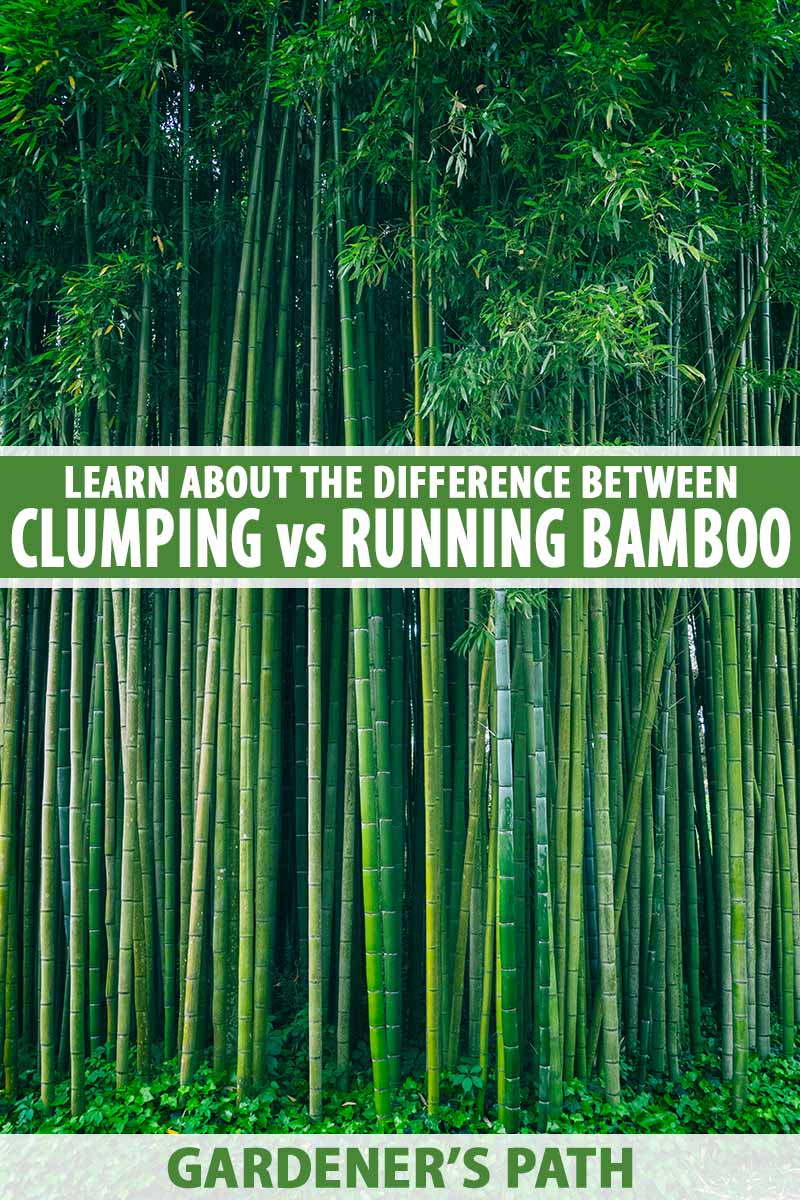
We link to vendors to help you find relevant products. If you buy from one of our links, we may earn a commission.
Sure, both forms of bamboo provide an attractive aesthetic in the landscape.
And of course, both types of cookie have the appearance of a delectable dessert. But if you use one or the other from either pair interchangeably, you’ll be sorely disappointed.
Bite into an oatmeal raisin cookie expecting the taste of chocolate chip, and you’ll experience a mouthful of fiber and regret.
Plant a running type where you should have used a clumping type – or vice versa – and you’ll probably end up wholly dissatisfied.
I could rant about chocolate chip vs. oatmeal raisin all day, but for the sake of this guide and my blood pressure, let’s turn our attention back to clumping vs. running bamboo, and really break down their differences.
We’ll even start with some quick “Bamboo 101,” if you’re new to the Bambusoideae subfamily.
Your journey on the path of knowledge begins here:
What You’ll Learn
A Brief Bamboo Primer
It’s hard to be a plant nerd on planet Earth without at least having heard of bamboo.
Even non-green thumbs probably know of these plants somehow, whether as a staple crop in Asian cultures or as a panda’s favorite food.
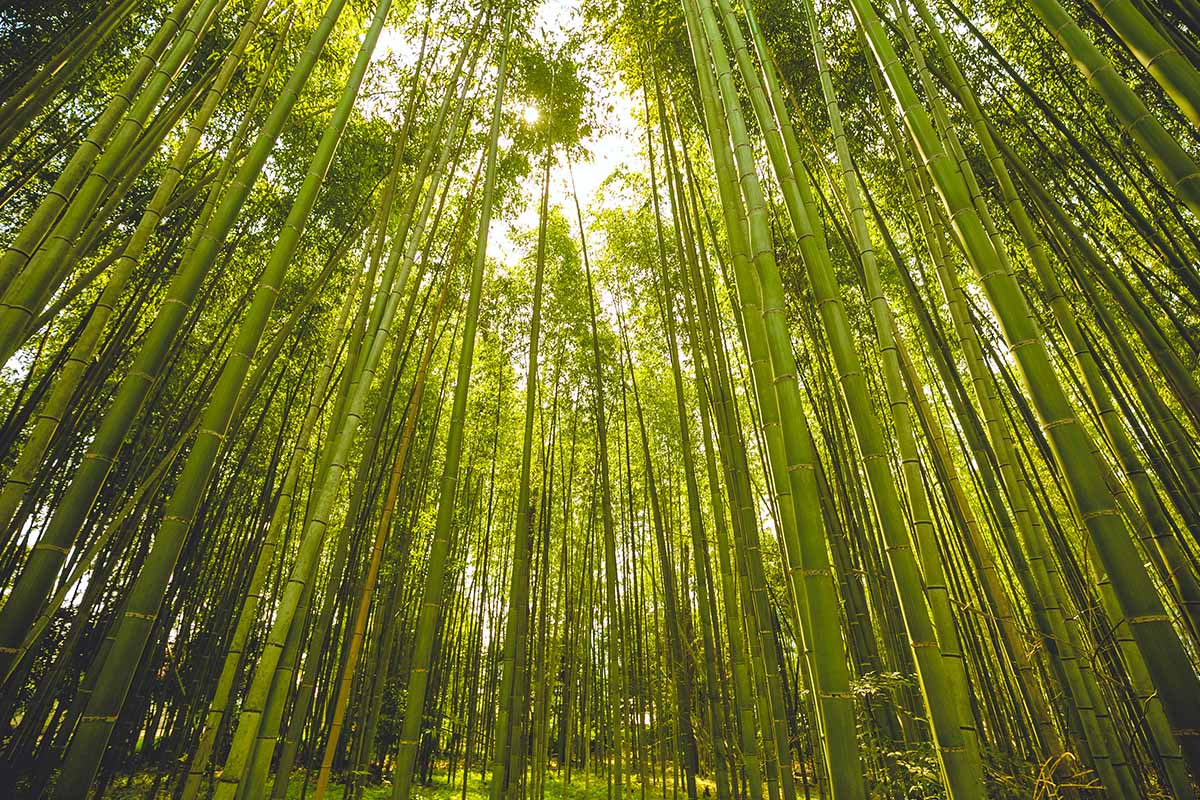
Belonging to the true grass family, i.e. the Poaceae, Bambusoideae is a subfamily of 1400-plus species of tall, treelike, and (mostly) evergreen perennial grasses, all contained within 115 or so genera.
Species of bamboo occur naturally on every continent save for Europe and Antarctica and grow in a variety of environments, from lowland riverbanks to cold mountains to island tropics.
Bambusoideae species come in practically all sizes. The smallest only reach four to six inches in height, while the giant, Dendrocalamus giganteus, is one of the largest species, with a maximum height of over 100 feet!

The woody stems of these plants, aka the culms or canes, are usually hollow between the ringed nodes, which sprout lateral roots and leafy shoots.
With an extremely rapid growth rate, culms reach their full height in their first growing season, staying slim all the while and never increasing their girth via secondary growth.
A new generation of culms emerges each year with increased size and thickness, leaving the entire colony looking larger and larger with each passing season.
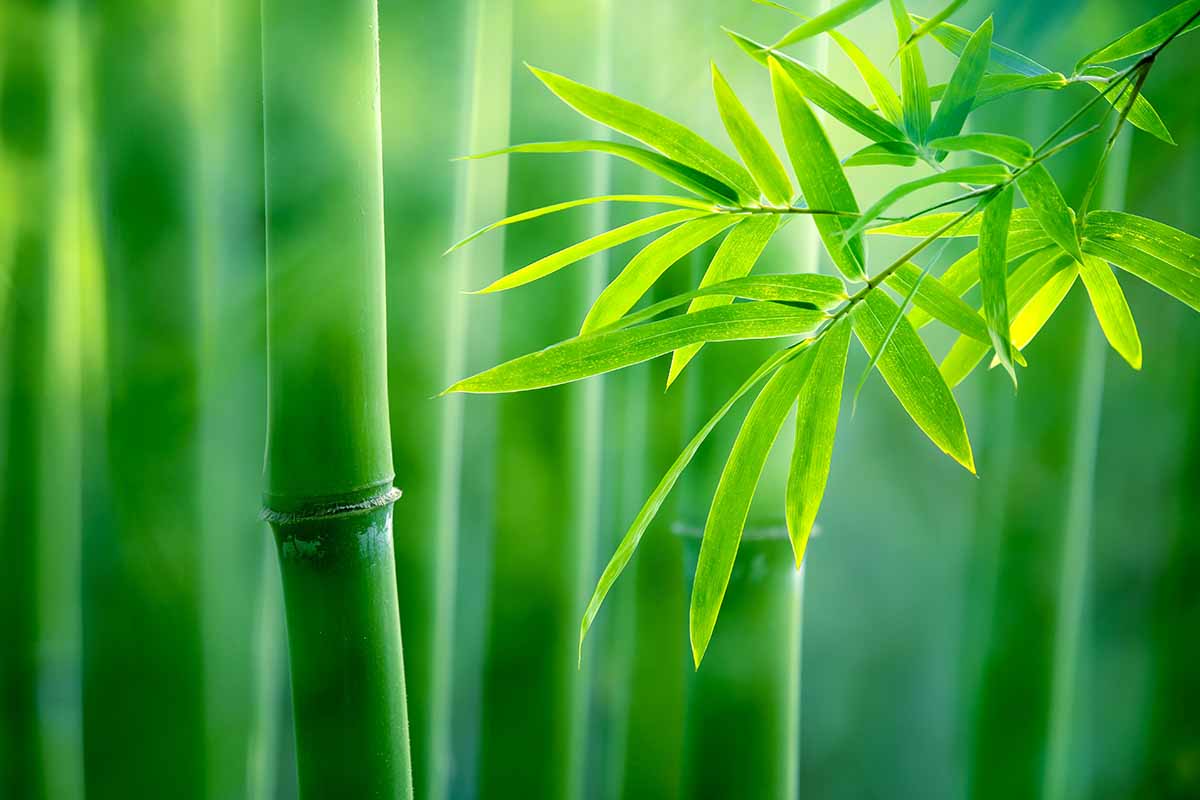
New culms are created via shallow rhizomes, which allow the colony to spread far and wide.
A large grove may not be a bunch of neighboring specimens, but rather, the widespread mass of a single plant!
These rhizomes are super important – especially when comparing clumping and running types. In fact, it’s the rhizomes that primarily differentiate the two!
Clumping Bamboo
Clumping types behave exactly as their name would imply: their culms grow together in tightly-packed clumps.
As a result, clumping types don’t cover much real estate with their culms, and the territory that they do conquer is taken over very slowly: a mere couple inches per year.
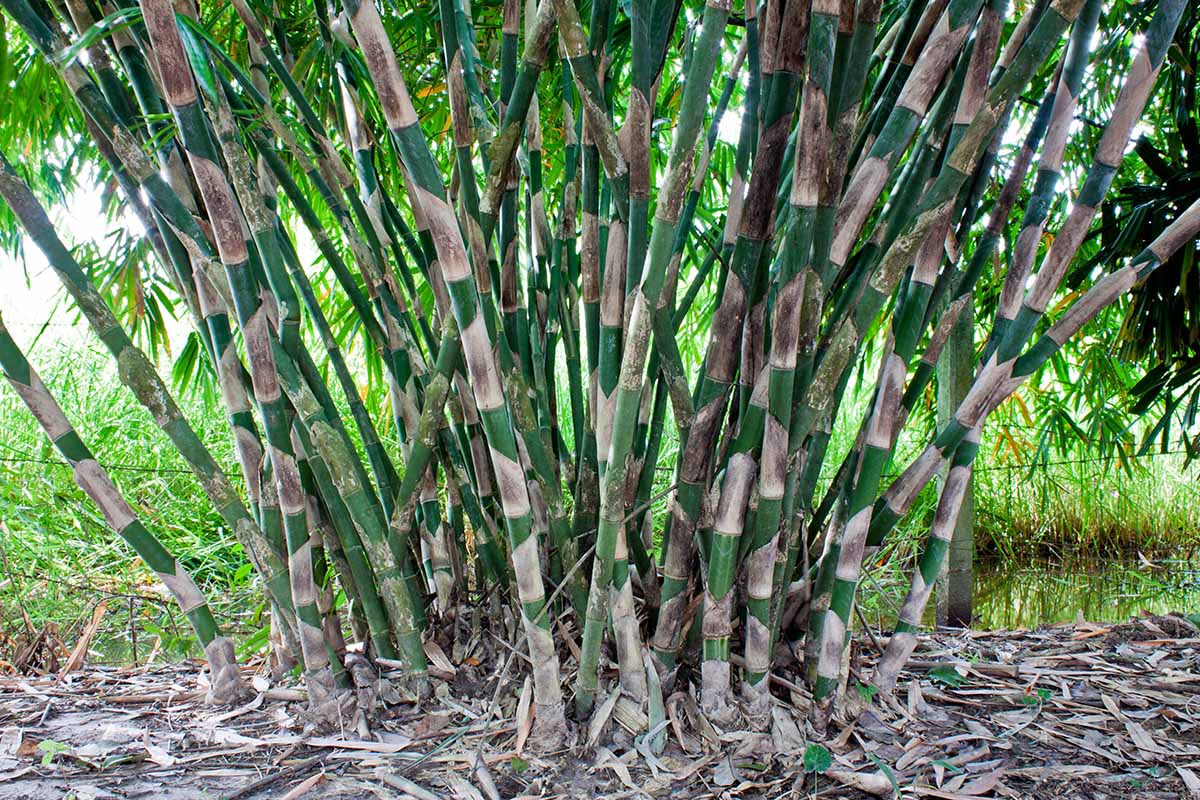
Below the soil line, the pachymorph rhizomes of clumping types are thick and upwardly curved, and exhibit very little horizontal growth before jutting upwards to form a culm. As a result, they are generally deemed non-invasive.
What clumper rhizomes lack in horizontal expansion speed they make up for in vertical vigor, as clumping bamboo can grow upwards faster than running types.
Clumper rhizomes also expand slowly, but with great strength – they can compete with the roots of adjacent plants, crack containers, and inflict damaging pressures on nearby structures such as walls, fences, and walkways.
Clumping types grow in a somewhat circular shape, and tend to be narrower at their bases and broader towards their tops.
Clumpers can’t form wide-spreading screens like runners can, but they make up for it by forming incredibly dense ones, as their culms pop up right next to each other.
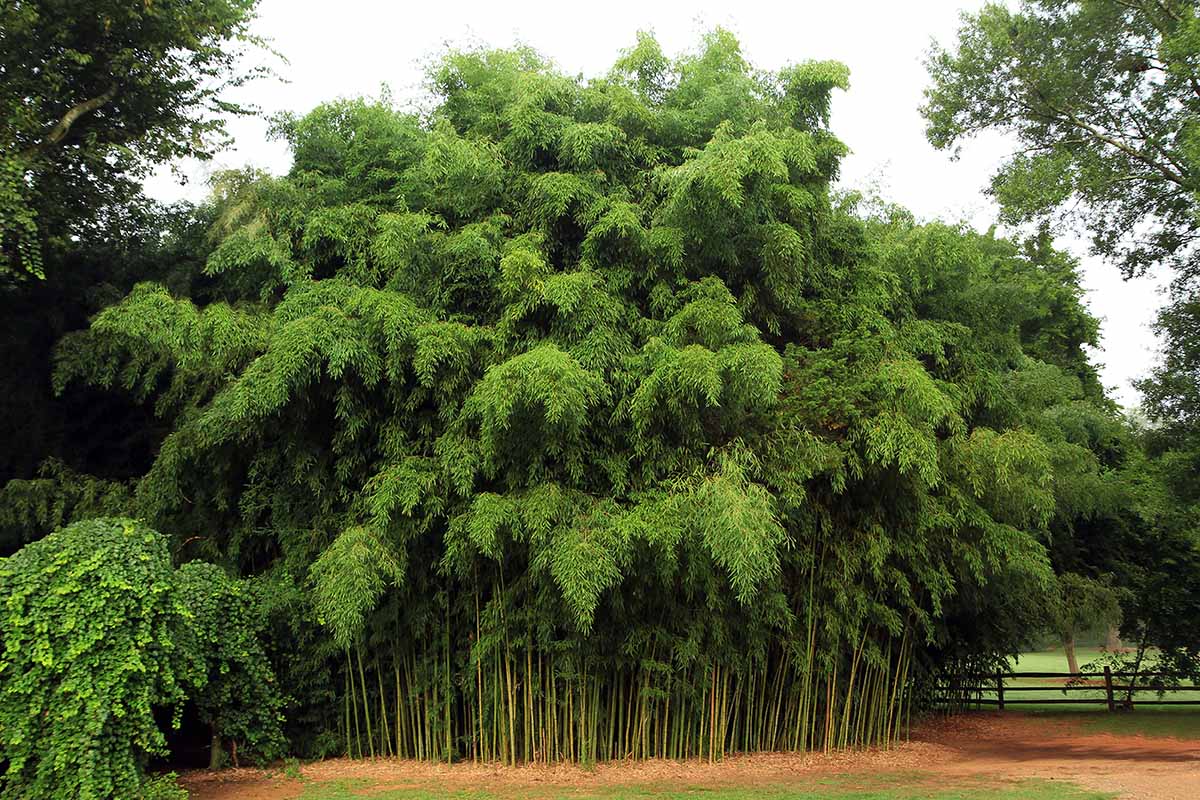
This density comes at a cost, though: when culms at the inside of the clump die, they can’t be reached for pruning without first removing outer, living culms.
If you opt to spare the outer culms and leave the inner dead culms alone, then the dead growth hinders the entire plant’s appearance, and could even become a weak spot for pests and pathogens to exploit.
Overall, clumping types aren’t as cold-hardy as running types, although there are mountainous clumping varieties that can handle the cold.
A clumper’s densely-packed form makes it the perfect selection for a specimen or accent planting, rather than a wide-spreading screen or border.
This should also be your choice when you have a limited amount of real estate for planting, or in cases where you don’t want the plant to spread far and wide. But be wary of structurally contained spaces – you wouldn’t want to cause any damage!
Running Bamboo
Now, let’s turn our attention to running bamboo!
While clumpers grow their culms closely together via thick rhizomes, runners have thinner leptomorph rhizomes that can run indefinitely before sprouting a new culm.
Clumpers may be able to form impressively dense specimens, but an entire grove of Bambusoideae? That would consist of running types.
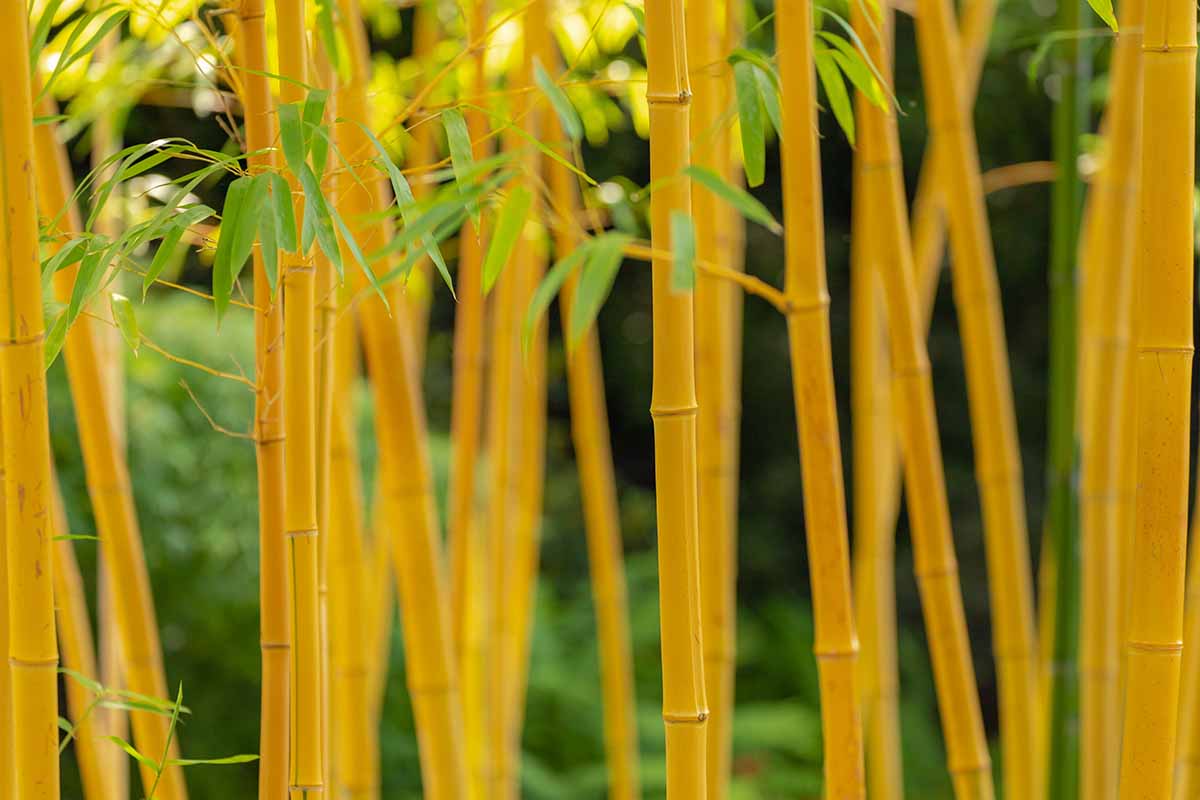
Clumpers may grow upwards faster, but runners can spread several feet per year and fill in with greater speed than clumpers do.
They’re optimal for forming quick screens, groves, and hedges, and their root systems are even capable of erosion control.
Their rhizomes don’t expand as strongly as those of a clumper, which makes them less likely to crack their container, should you decide to go with a potted planting.
Runners are capable of growing in narrow areas, such as the thin strip of land between suburban properties. This makes them an ideal border screen for privacy.
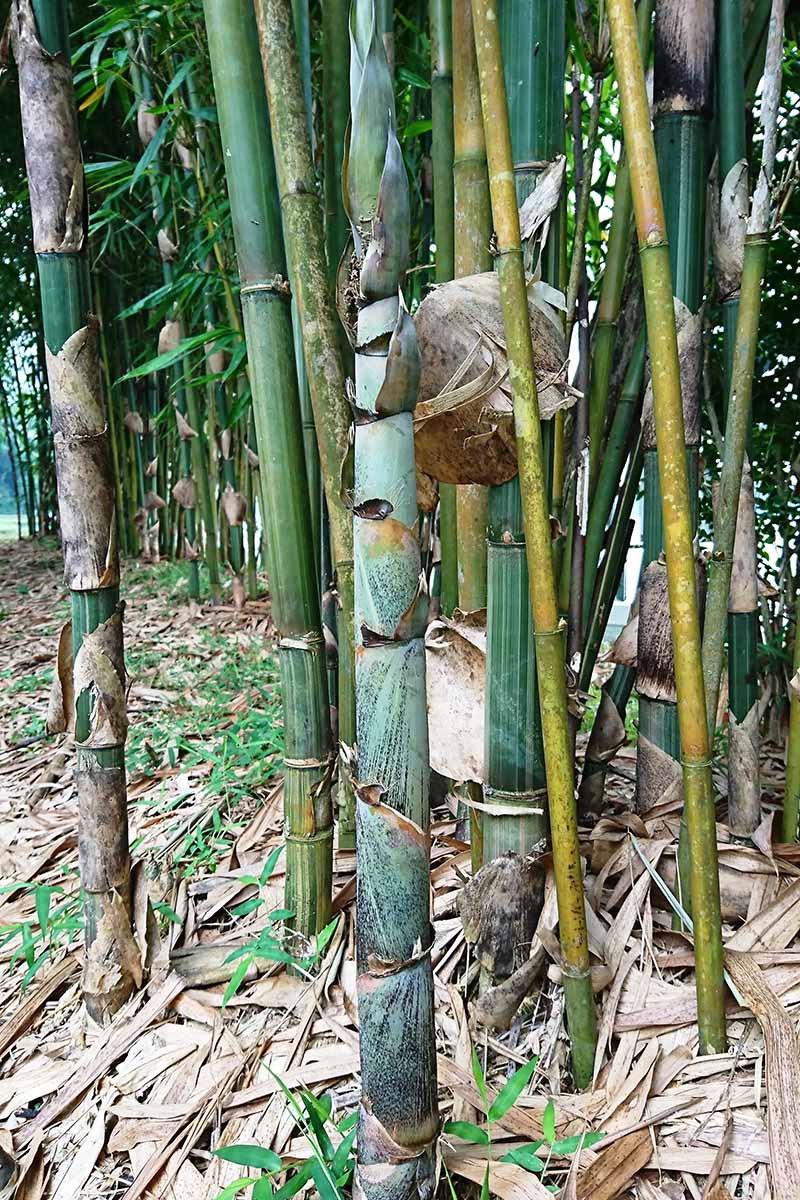
Runners are more likely to grow out of bounds, given their extremely fast expansion rates, but each individual running rhizome is a lot easier to physically remove from the ground than clumper rhizomes are.
Regardless of which type you’re managing, you’ll have to be clever – clumpers tend to go through obstacles, whereas runners are quick to change directions if they run into resistance.
As running types offer a larger selection of species overall, it’s often easier to find a variety of running bamboo for your particular climate.
But some running species are listed as invasive in parts of the US, and therefore shouldn’t be considered.
Which Should You Use?
Personally, I’m a fan of easy decision-making, so here’s the simplified gist:

If you’re seeking…
- Dense culms
- Fast upward growth
- A slow spread
- A specimen planting
- An accent planting
- Non-invasive growing tendencies
- A circular growth habit
- A planting for limited, yet uncontained space
… then go with clumping specimens!
But if you’d rather have…
- Less dense culms
- A narrow border or screen
- Erosion control
- Fast horizontal expansion
- Easier removal
- More cold- and heat-tolerant options
- Container plantings
- A bamboo grove
… then you should choose a running specimen!
But not every “clumping or running” decision will be clear-cut.
There’s nothing wrong with consulting your local landscaping pros or more experienced bamboo gardeners for guidance.
Perhaps you can learn from their successes and save yourself some mistakes!
Put Some Bamboo in the Queue
I’ve been guilty of putting together some pretty atrocious queues, particularly when it comes to music.
Believe me, “having aux” on long road trips with friends is not a privilege I tend to hold onto for long.

But I’m confident in this claim: adding clumping and/or running bamboo to the long list of plants you hope to grow at some point would be a wise choice.
Now that you know what roles they’re best suited for, you’ll be able to enjoy them even more!
Have questions? Got remarks? The comments section is your oyster.
And for more information on growing grasses in your landscape, have a read of these guides next:
Hello Joe, thank you for the info on the different type of bamboo; it’s incredibly helpful. We are located in Toronto, Ontario, and are interested in planting tall bamboo along our backyard property line to create a privacy screen. Could you offer some advice on the right bamboo species and recommend a reliable landscape contractor? We would greatly appreciate it.
Glad you liked the article, Luigi! For your situation, I have a few species recommendations that are hardy in your area: Bisset Bamboo (Phyllostachys bissetii) is a gorgeous running-type that should grow up to 12 feet tall in your area. Incense bamboo (Phyllostachys atrovaginata) is a beautiful running bamboo that should be capable of growing up to 20 feet tall where you’re at. Plus, incense bamboo has a faint aroma of sandalwood! The macon rivercane bamboo (Aurundinaria gigantea ‘Macon’) is another beaut that can reach heights of 6 to 8 feet where you’re at. It’s also a species that’s native… Read more »
Your writing was impeccable. It was informative but yet held my interest. It showed personality and your passion for plants. Thank you for taking the time to write this.
You’re quite welcome Renee, and thank you very much for your kind words! Yeah, I try my best to toe the line between education and entertainment with these guides… sometimes I write them with too much information and they read like a textbook, other times I go a bit overboard with the analogies and pop culture references. It’s nice when I get that balance right, LOL.